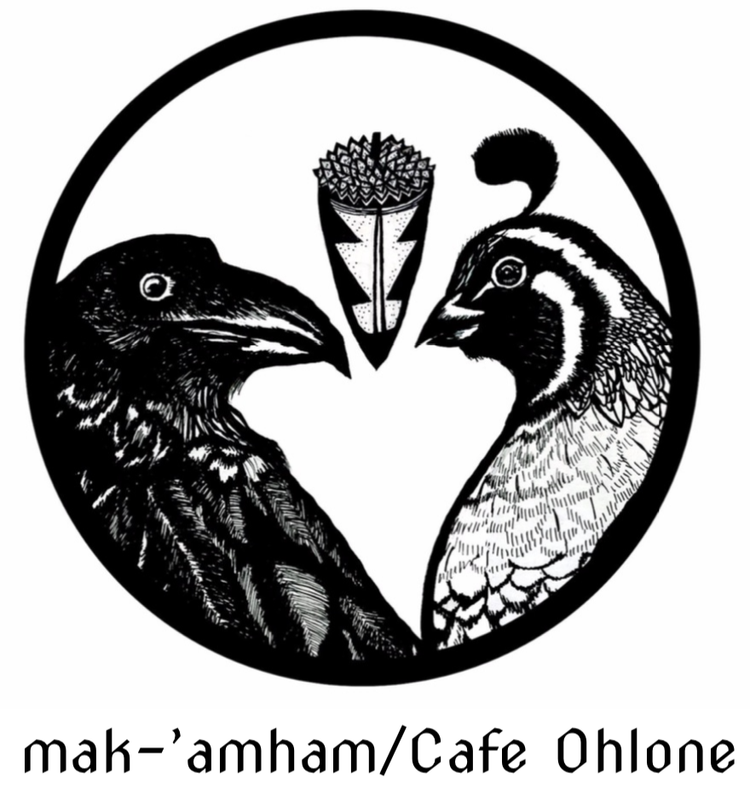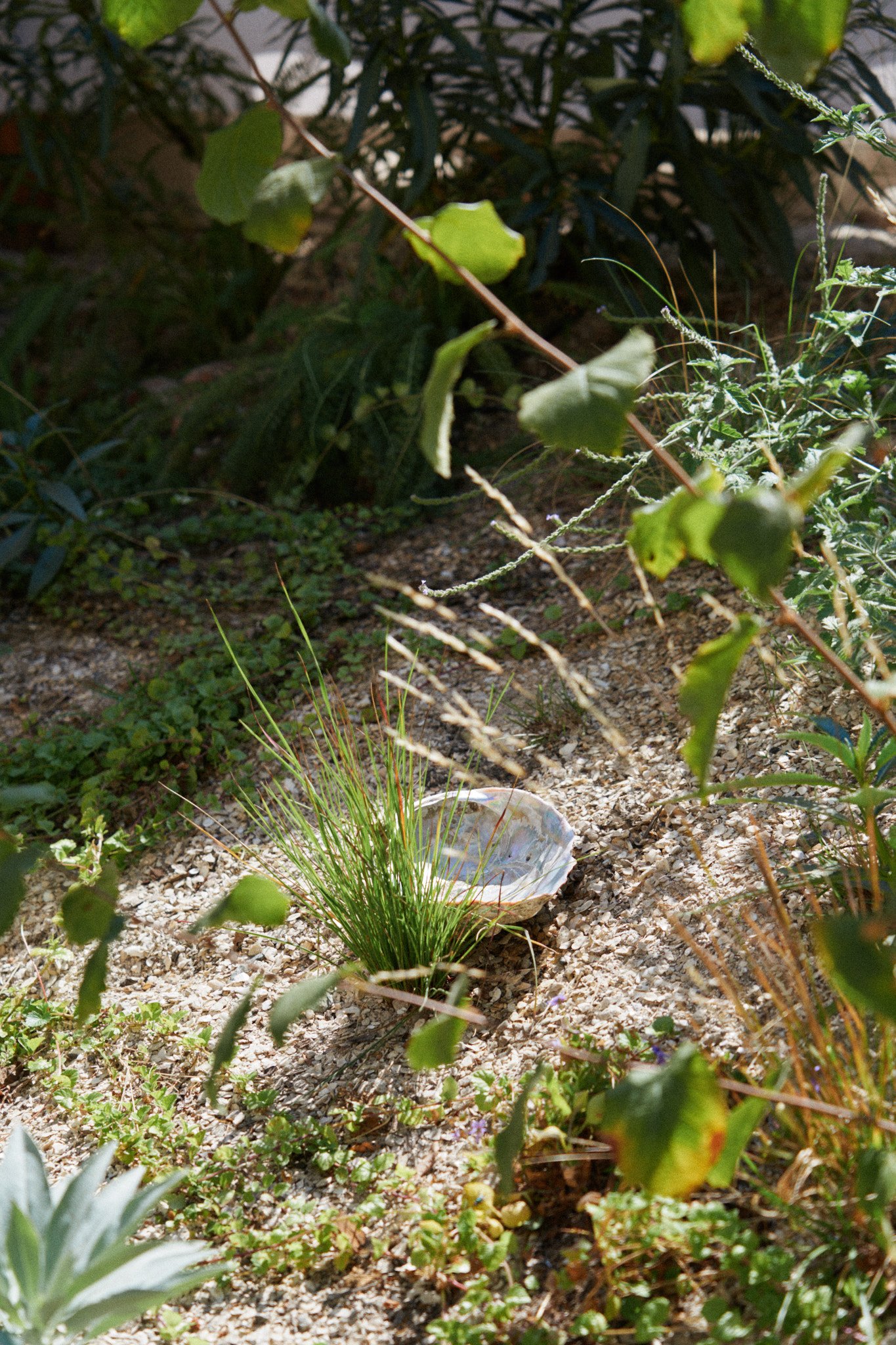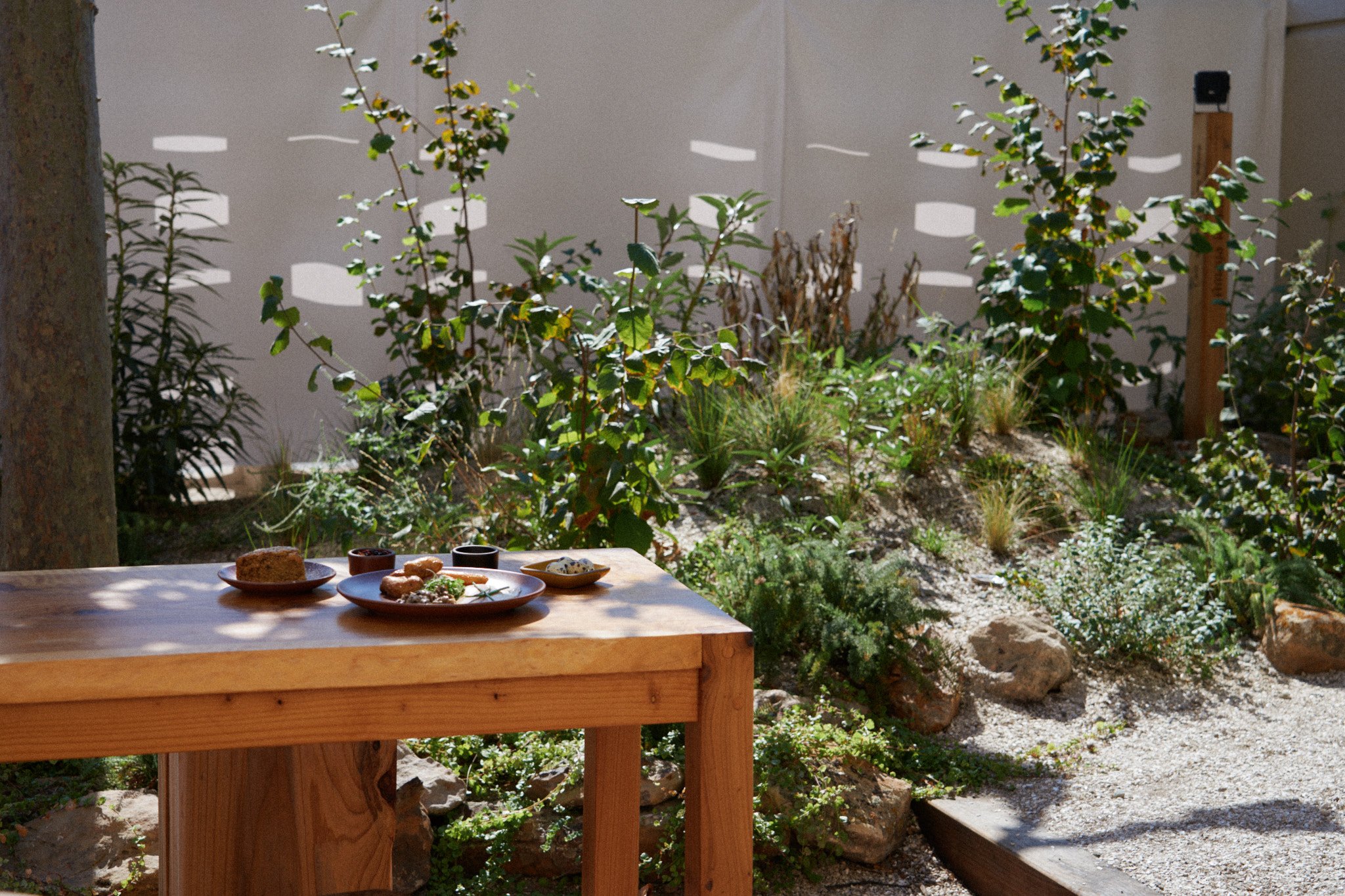Cafe Ohlone
A love song to Ohlone culture
Cafe Ohlone’s latest iteration, ‘oṭṭoytak, is located outside the Hearst Museum of Anthropology on the UC Berkeley campus, at Bancroft on College Avenue. We are open to the public for occasional meals, private lunches, and education sessions. Please email us for more information on private lunches and education sessions. If you’re interested in having us come to your organization for a session, or if you’re interested in having us consult your organization, email us.
Let us walk you through ‘oṭṭoytak, with many thanks to the wonderful folks at Terremoto, who helped us make our vision a reality:
A gated entry to the open-air terrace opens into a lush, outdoor, curated culinary and educational experience in the form of three, unique areas that flow into one another.
A portal of light and shadows leads into ‘oṭṭoytak — Area One
The first area upon entry pays respect to the original Cafe Ohlone space at University Press Books, where diners entered into the bookstore without seeing the Cafe in the back, adding a layer of mystery and wonder to the experience as, like with a portal, guests were transported into a world reimagined. This first area offers suggestions of what will follow throughout the dining experience. After entering the gated entrance way off of Bancroft Avenue, diners enter a scrim-covered, open-air shadow box framed by redwood. This shadow box is illuminated by the light of the sun during the day and lit softly at night, displaying dramatic silhouettes of native plants dancing in the wind, altering shape and movement with the changing light. The plants chosen by our elders showcase our traditional East Bay landscape and traditional Ohlone foods, as well as subtly introduce Cafe Ohlone’s functional native plant gardens, generously curated in partnership with our friends at Oaktown Nursery. Diners have their first view of one of the burlapped native gardens after walking along a transitional path from this first area; the gardens throughout ‘oṭṭoytak are full of aromatic and much-respected plants that will be made into teas and added to the plates of our meals. In this first space, diners are checked in and directed to their seats.
Our voices are a part of the landscape — singing trees
The sounds diners hear upon entering ‘oṭṭoytak, amplifying as they reach the second and third areas, come from native trees singing in Chochenyo language. In our old-time beliefs, still held close by our Ohlone people today, there was a time before humans existed when plants could speak. This dreamy belief inspired Cafe Ohlone’s singing trees: seven native trees each have the voice of a living Chochenyo speaker from our Chochenyo language program. It is so beautiful in action: an elder’s voice begins to sing by themself — a familiar oldie, a ballad heard in our grandparents’ homes growing up; their beautiful, wise voice joined, one voice after another, with voices of different generations, until all are singing in unison, in harmony. Suddenly, all the trees appear to be singing at once, saturating ‘oṭṭoytak with song in our enduring language. Then, each voice drops off, one after another, until only a child is singing in the language — representing the next generation of Ohlone culture and those still to come. When the trees complete their song, the voices will shift to jokes and conversation in language — birdsongs of geese, flickers, blue jays, and red-winged blackbirds will serenade diners when the Chochenyo voices take a break. We acknowledge Meyer Sound for generously donating a wonderful sound system to us; Thank you to Krysten Mate, Chris Manning, and also Dylan Williams for their work with our soundscape.
Diners follow along a short, meandering path to arrive at the second area, and the first of two dining areas. This area will soon feature building-size, epic murals by the renowned California Indian artist Jean LaMarr (Northern Paiute/Pit River), who will paint these murals full of meaning and symbolism to our Ohlone community. Auntie Jean painted the prolific Ohlone Mural at Ohlone Park in Berkeley, a mural that touches the hearts of our people, in 1995. Along the other side of the courtyard, will be a dry creek made of Napa Basalt, interspersed with riparian plants, connecting the two dining areas. Winding paths through blossoming gardens throughout this second area connect a series of dining tables, each handmade with locally and sustainably sourced redwood from our friends at Bay Area Redwood, with whom we developed a partnership during the pandemic. We worked with Bay Area Redwood and Terremoto to realize designs in the woodwork that are culturally specific for Cafe Ohlone.
Each dining table has a seat made out of a redwood log, designed with comfort and sustainability in mind. Along the dry creek, there is a series of Napa Basalt boulders as seats for two dining pods along two redwood table tops; the entire space speckled in abalone; traditional baskets shown on special days with great respect. The signature burlapped native plant gardens continue throughout this second area, and the air is perfumed with Indian flowers and medicinal plants. The native plants also separates dining areas for social distancing — aware of our desire, and need, in this moment to be together, yet apart.
A shellmound rises in a fragrant garden of abundance — Area Three
The lavish gardens continue to expand with each area entered, growing more lush and intensely aromatic, culminating with the third area, centered around a long, communal redwood table for our Ohlone elders, as well as a series of redwood tables for smaller groups. The wall behind the family table is trellised with native blackberry vines, alongside the dry creek that runs from area two; a redwood ramada — a traditional shade shelter — covers the communal table from above. Adornments of the clamshell and abalone hanging from the ramada’s roof twinkle in the evening candlelight.
The largest of the singing trees is in area three, as well as a storybook valley oak tree — also with a Chochenyo voice — in recognition of the importance of oaks and acorns in our Ohlone culture. The southern side of area three showcases a new shellmound: a raised hill made of crushed oyster shell, mussel shell, abalone shell, and earth. This new shellmound pays respect to the traditional Ohlone shellmounds that ring San Francisco Bay — sacred sites for our people, built by the hands of our ancestors. All the dining tables in area three are surrounded by an abundance of plants. These gardens will be full of native plants such as artemisia, poppies, mugwort, ceanothus, hummingbird sage, Indian strawberries — much as the landscape was prior to colonization: full, yet managed.
Cultural education complements exquisite Ohlone cuisine — Cafe Ohlone’s offerings
Cafe Ohlone has always been a one-of-a-kind culinary and educational experience. Every meal of luxurious Ohlone cuisine educates the public about our rich, enduring culture. Our menu expanded throughout the pandemic, with new, sustainable sources of traditional foods added to our menu by season: fine black oak acorn soup; bay nut truffles; Ohlone salads; San Francisco Bay dungeness crab and king salmon; seared venison backstrap; Tomales Bay mussels and clams; soon-to-be-served Olympia oysters, the native oysters to this part of the world; chanterelle mushrooms; Indian strawberries; Indian teas made of elderberry, hummingbird sage, yerba buena, and rosehip—to share a sampling of our menu.
A community space for Ohlone people
‘oṭṭoytak also functions as a tangible, cultural space for our living Ohlone community; a space where language classes are held, safe gatherings and meals for our elders occur, and our community can see representation of our cultural identity outside of our homes. It is a permanent center of the effort to build relationships with departments throughout campus to better relations between Ohlone people and the University of California, Berkeley.
‘oṭṭoytak is a valuable and necessary space for Ohlone cultural identity in the East Bay, where tradition flourishes in a modern-day setting and where Ohlone culinary tradition, language, history and living identity can be fully made visible again. We also acknowledge, and are fully aware of, the harm the University of California, Berkeley — specifically, the Hearst Museum of Anthropology — has historically caused to our Ohlone community, and our role on campus will work toward healing and developing new, better relations with the University and departments across campus.
‘alšip-mak — We are grateful
In Chochenyo language, the oldest language of the inner East Bay, we say ‘ammamak — Let’s eat!




